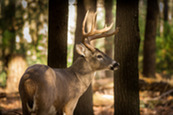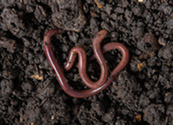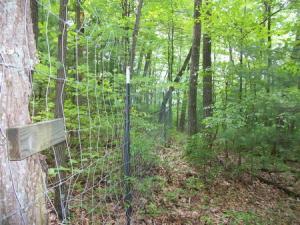|
Volume 13- December 2023
Deer Herbivory
Deer are a favorite target of wildlife watchers, hunters and other outdoor recreationists. However, deer overpopulation can lead to reduced habitat integrity, with simplified forests that are less diverse and less resilient to other stressors such as forests pests and climate change. The impacts of white-tailed deer (Odocoileus virginianus) overpopulation can have lasting impacts on both wildlife habitat and wood fiber, with effects detectable decades after damage was done.
As we move into the winter season when forage becomes limited for herbivores, this issue of the Reader highlights recent studies that examine impacts of deer browsing, various attempts to control or manage it, and interactions with other kinds of disturbances across eastern forests in the United States, including in Minnesota.
---
The Minnesota Research Reader is a collaboration between the Minnesota Department of Natural Resources and the U.S. Department of Agriculture Forest Service that provides a quick look at emerging research relevant to our work in the State of Minnesota. We hope you enjoy the selection of articles in this month's edition of the Reader!

In this 2021 article, Sam Reed of the University of Minnesota and his colleagues with the U.S. Department of Agriculture Forest Service, Northern Research Station investigated the impact of white-tailed deer browsing during stand initiation. They documented the effects on canopy structure, tree species richness, diversity, stem density and basal area over four decades. A controlled browsing experiment initiated in 1980 on the Allegheny Plateau in Pennsylvania provided a unique opportunity to examine the legacy of deer browse after nearly four decades of growth with a portable LiDAR system for the project.
Management Implications:
- Deer browsing impacts on the forest canopy are apparent nearly four decades after stand initiation.
- High deer densities led to stands with lower species diversity and tree density, which resulted in canopies that were taller and less dense.
- High density ungulate populations indirectly change stand and canopy structure. This likely has important long-term effects on many associated ecosystem services, such as habitat for wildlife and carbon sequestration.
|

Disturbances change our forests. However, we are only just beginning to understand how disturbances may be linked to one another. By understanding disturbance links, we may be able to manipulate one forest disturbance to manage another.
New research published in the journal Ecology highlights some unexpected disturbance linkages in the north woods of Wisconsin. The team, led by Sam Reed of the University of Minnesota; Dustin Bronson, a plant physiologist with the U.S. Department of Agriculture Forest Service, Northern Research Station; and their colleagues, investigated the links between disturbances in terrestrial ecosystems. Specifically, the research focuses on the relationship between canopy gaps, browsing by white-tailed deer, and nonnative earthworm invasions. While the individual effects of these disturbances on vegetation are relatively well-understood, their long-term influence on each other and their combined effects were not well understood.
Management Implications:
- Fencing out or reducing deer populations may have benefits beyond improving forest biodiversity.
- By reducing deer populations or creating canopy gaps through targeted tree harvesting, it may be possible to control undesirable disturbances such as invasive earthworms.
- By understanding the disturbance links in temperate forests, researchers and managers may be able to develop more effective strategies for restoration and ecological management in the face of a changing climate.
|

In this 2023 article, researchers with the University of Pittsburgh, U.S. Department of Agriculture Forest Service Northern Research Station, and Carnegie Museum of Natural History tested the extent to which four disturbances drive plant community assembly, diversity and abundance, and how these disturbances interact. The four disturbances assessed were tornadoes, deer browsing, salvage logging and mechanical removal of the understory.
Management Implications:
- Gap-forming land management techniques (salvage logging) can enhance herbaceous species richness and shrub abundance.
- Deer had an indirect effect on understory plant community competition.
- Tree diversity and abundance were unaffected by the combined disturbances in this study.
|

White-tailed deer have been abundant in eastern North America for more than five decades, resulting in depauperate understories and ricocheting effects on higher trophic levels. Even after deer populations are reduced, understory plant communities may fail to recover for an unknown length of time due to persistent legacy effects. This 2023 study, led by researchers with Youngstown State University, U.S. Department of Agriculture Forest Service Northern Research Station, and University of Pittsburgh and published in the Canadian Journal of Forest Research surveyed understory plant communities in six deer exclosures and paired reference plots in northwestern Pennsylvania to determine the degree to which 19 years of deer exclusion was sufficient for recovery of species richness, diversity, percent cover, and understory structural complexity.
Management Implications:
- After 19 years, researchers observed a 2.3-fold increase in tree cover and a 60% reduction in fern cover in the ground layer, as well as a 114-fold increase in foliage density between 80 and 200 cm above ground level, in exclosures compared to reference plots.
- The exclosures did not permanently support higher overall percent cover, species richness or diversity in the ground layer, nor was there any meaningful divergence in community composition between exclosures and reference plots.
- After nearly two decades without pressure from deer browse, understory structural complexity was restored.
- Deer browse can have lasting impacts on ground layer diversity.
|
|